Circuit-Zone.com - Electronic Projects
Posted on Monday, April 15, 2019 • Category: Headphone Amplifiers
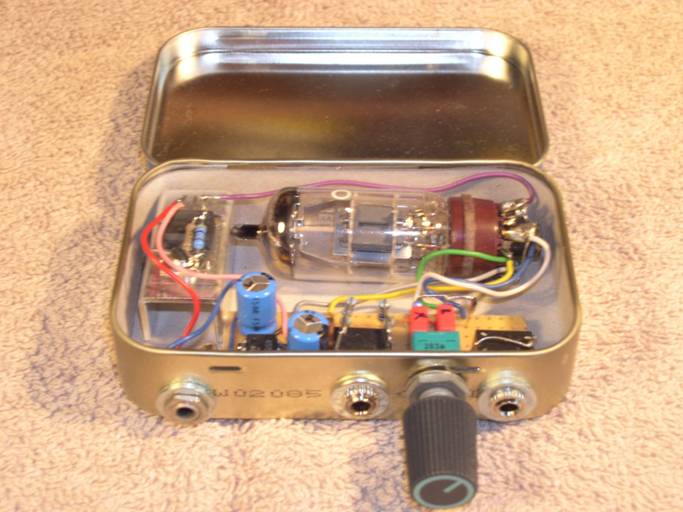
This little tube amplifier is easy to build and will fit into a small metal Altoids box and can be carried around. It can be build with few common parts, that should be readily available. Amplifier works with many tubes like 6DJ8, ECC88, 6922, 12AT7, 12AX7, DAF96, 1T4, etc. It is powered by 12V supply and power consumption may be optimized to allow for small rechargeable battery packs.
Posted on Friday, April 27, 2012 • Category: Headphone Amplifiers
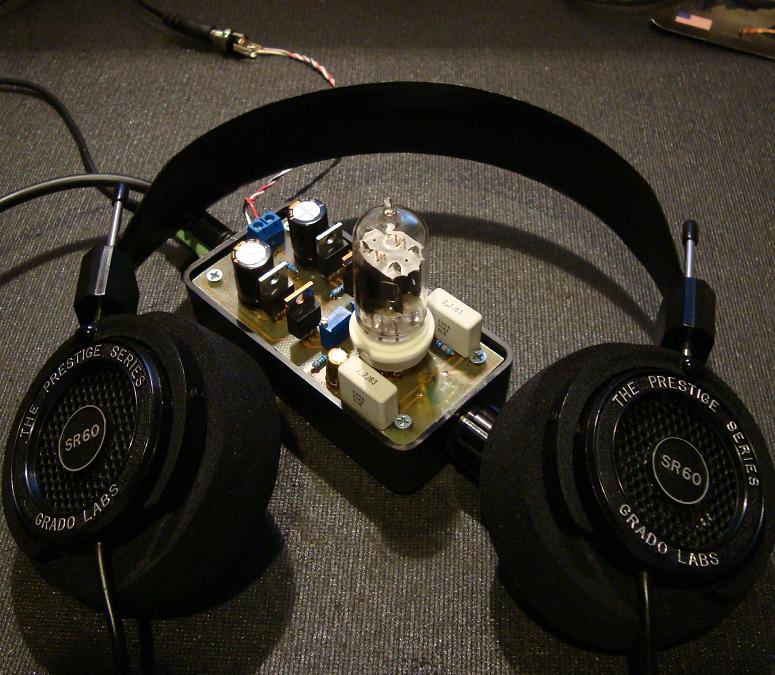 This is simple to build audiophile class-A tube headphone amplifier. It is based around 12AU7 / ECC82 audiophile vacuum tube that provides warm, rich and smooth sound expected from audiophile amplifiers. The 12AU7 (ECC82) is a Twin Triode vacuum tube, it is very popular in the audio world because it is rather rugged and can be operated at lower voltages. Headphone amplifier and 12AU7 tube is powered by just 12V DC voltage. This is great news for those new to vacuum tubes that want experience and learn more about them. Typically vacuum tubes operate at high and dangerous voltages so you must have some experience and know what you are doing. On the other hand this headphone amplifier operates at low 12V voltage so it is safe to build and experiment.
Posted on Monday, April 16, 2012 • Category: Headphone Amplifiers
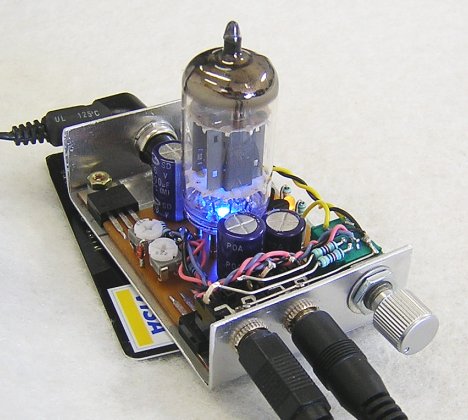 Simple Hybrid Headphone Amplifier DIY Audio Project. Rogers has put together a very simple hybrid headphone amplifier. The head amp uses a 12AU7/ECC82 vacuum tube for voltage gain stage and a IRF612 MOSFET follower biased in Class A with a passive CCS. What is nice about the project is that both the tube and MOSFET operate off of a 24V external switch mode power supply. Read on for more details about 12AU7 Tube / IRF610 MOSFET Hybrid Headphone Amplifier.
Posted on Sunday, April 15, 2012 • Category: Headphone Amplifiers
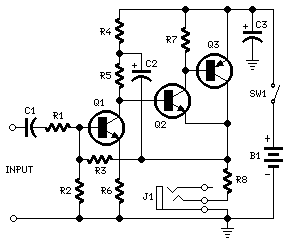 Portable Headphone Amplifier powered by just 3 Volts.
Notes:
* Can be directly connected to CD players, tuners and tape recorders.
* Tested with several headphone models of different impedance: 32, 100, 245, 300, 600 & 2000 Ohm.
* Schematic shows left channel only.
* B1, SW1, J1 & C3 are common to both channels.
* R3 value was calculated for headphone impedance up to 300 Ohm. Using 600 Ohm loads or higher, change R3 value to 100K.
Posted on Monday, July 4, 2011 • Category: Headphone Amplifiers
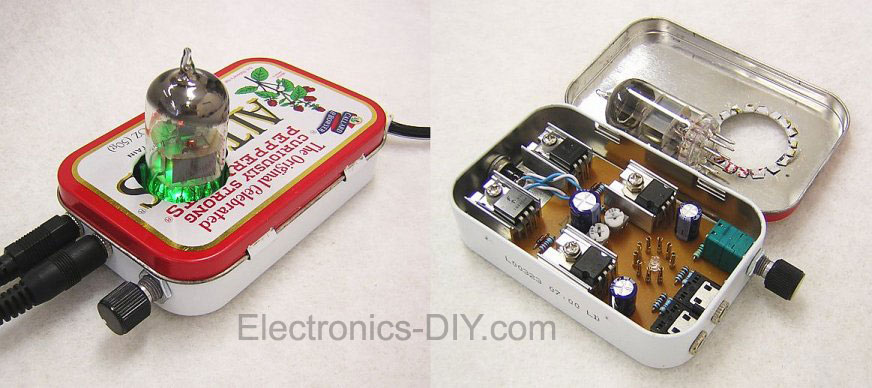 Here's a simple to build hybrid tube headphone amplifier built around 12AU7 / ECC82 vacuum tube. I have always been intrigued by tube amplifiers, but most DIY kits are very expensive and use very high voltage. So I decided to build an amplifier that would be inexpensive and had the least amount of parts necessary to drive a pair of 32 ohm Grado headphones.
Having built several YAHA amps based on the fa-schmidt design, and a Szekeres Mosfet follower I wondered how the two would sound together. So I built the schematic into TINA-TI, a free spice based program to test circuits before the build, and the results were remarkable. Nearly 20dB of gain across 20Hz-100kHz from a 13VDC power supply.
As you see in the schematic and parts list, there are less than 30 discrete components and most DIY'ers will have them as spares from other builds. I chose the 12AU7 / ECC82 vacuum tube because it can be driven with low voltage and the filament voltage is 12.6 volts, so there is no need to regulate the voltage any further. I used 1/4W resistors in the first stage and 2W in the second. The 2W resistors may be overkill but I did not want to change them later. The 20ohm resistor must be a minimum of 5W and do not use wire wound, as the inductive characteristics will distort the response curve.
Posted on Monday, June 6, 2011 • Category: Headphone Amplifiers
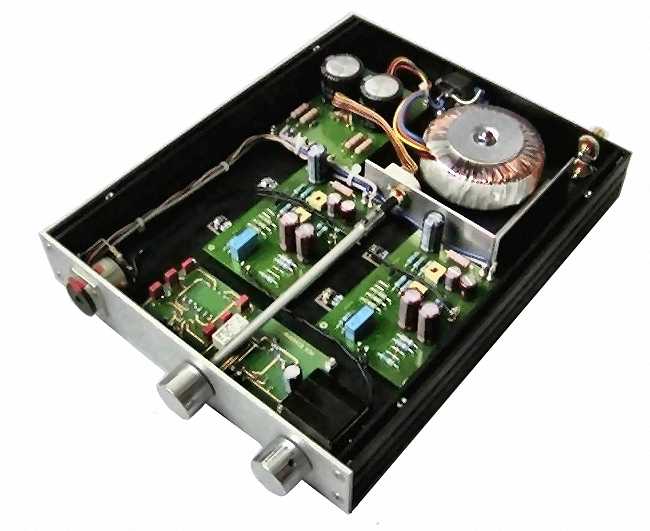 This is a scaled-down version of Nelson Pass' Zen power amplifier for my headphones. For this use, the Zen topology is perfect excellent sound quality, simplicity, linearity and no multi-stage feedback. It is a single stage class A MOSFET design with the right gain and a low output impedance. Here we don't have the limitations of the Zen amps at least in the single-stage implementations regarding speaker compatibility. A single stage topology with correct interfacing values misses very few things in the original music message.
The gain device in the original Zen amplifier is biased by fixed current source. For this amp, I employed an active current source described in Pass' patent no. 5,710,522 (see Zen Variations Part 2). The benefits of an active source include higher output current, lower distortion and 50% theoretical operating efficiency (compared to the 25% efficiency from a fixed source). This type of current source is featured in the Aleph power amplifiers from Pass Labs.
Posted on Monday, June 6, 2011 • Category: Headphone Amplifiers
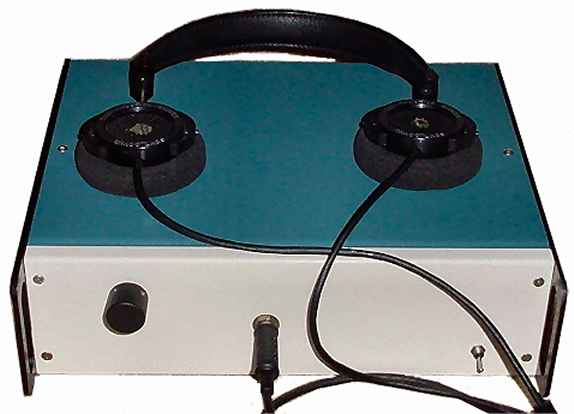 This class A headphone amplifier can output up to 0.5W into a 32-ohm headphones. I built this headphone amplifier for dynamic headphones based on my rules of proper audio design. People who know my designs will realize that this headphone amplifier is much more than just a headphone amp. It is a pure class A design containing a new never-before-seen servo loop that is not part of the audio signal chain in any way. The sound of this class A headphone amplifier is just amazing.
Posted on Saturday, June 4, 2011 • Category: Headphone Amplifiers
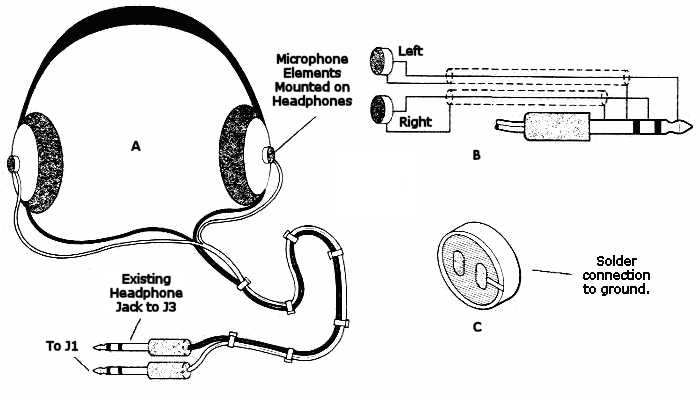 In today’s hectic and noisy world, we are all searching for a little peace and quiet. Well, you might not be able to slip off to a tranquil forest for an hour or two, but you can block out background noise with the Noise-Canceling Headphones. The theory behind this project is that by picking up ambient sound with a microphone and reproducing it out of phase, we can actively cancel or "null" out background noise. In fact, several commercially available devices perform the same function. However, by building your own headset, you can add features not otherwise available and have fun while doing it!
Along with noise-features, the Active Noise-Canceling Headphones let you mix in an auxiliary line-level signal from a CD or tape player. That allows you to minimize background noise while quietly listening to music. The project also has a phase switch that will let you keep the microphone signals in phase, thus amplifying background sound. In addition, the design of the Noise-Canceling Headphones lends itself to several other interesting functions, which we will look at later.
Posted on Thursday, May 5, 2011 • Category: Headphone Amplifiers
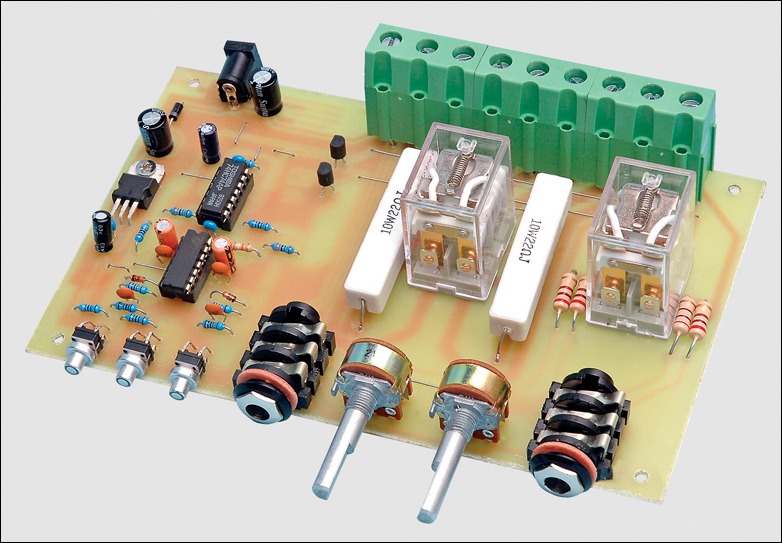 If you built our 20W Class-A Stereo Amplifier described last year, you will be aware that it lacks a headphone socket. Similarly, many hifi valve amplifiers also lack a headphone socket, the assumption being that a true hifi enthusiast will want to listen via good-quality loudspeakers.
A headphone output was not included in the Class-A Stereo Amplifier because it would degrade its superb audio performance. Both the wiring paths and the general circuit layout are critical factors in the design and any changes, however slight, can cause big changes in the signal-to-noise ratio and harmonic distortion figures of the amplifier.
Click for larger image
Fig.1: the Stereo Headphone Adaptor connects between your stereo amplifier and the loud-speakers and can drive two pairs of headphones.
If you do want to listen via headphones, a far better option is to build the simple Stereo Headphone Adaptor presented here. It connects directly to the amplifier’s speaker terminals and switches the loudspeakers and stereo headphone sockets using two DPDT (double-pole, double-throw) relays, so there’s no chance of it degrading the audio performance.
Posted on Tuesday, May 3, 2011 • Category: Headphone Amplifiers
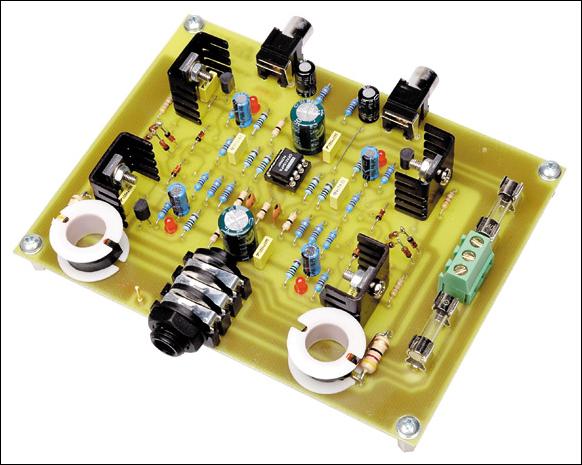 This is a dual/stereo headphone amplifier with high quality audio built around OPA2134. This headphone amplifier can drive high or low impedance phones with low noise and distortion. When used with line level signals from CD/MP3 players, etc., requiring only a power supply and volume potentiometer.
Many high-power amplifier audio designs have already provided an output for headphones. To support simple headphones, additional circuitry is required by adding only two resistors in series with the loudspeaker output to limit the drive current and protects the phone that in terms of reinforcing failure.
Considering its simplicity, this scheme works well resistive limit, although it will cause distortion if the load is non-linear - a prospect that may be most headphones. In addition to eliminating potential sources of distortion, there are a number of other reasons why you might consider to build a separate headphone amplifier.
Posted on Friday, April 29, 2011 • Category: Headphone Amplifiers
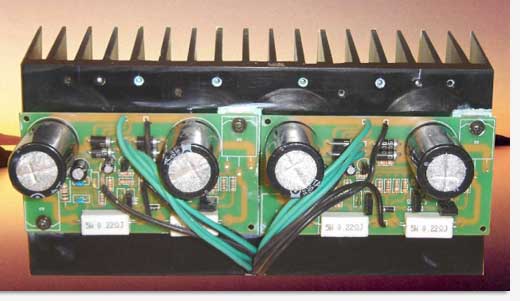 Here is a simple 100W HI-FI MOSFET Amplifier.
The main feature of this amplifier is a simple design and assembly. Simplicity of the circuit by looking at the circuit you expect amplifier to be simple. It should be noted that many hi-end amplifiers have a very simple but good quality designs. General technological theory is due to fewer parts, fewer problems. Additionally power to supplement your system is quite effective. Power supply transformer is very important. 8 Ohm output for a 35 - 0 to 35 V and at least 3 amps per power amplifier is recommended that a transformer can be transferred. Naturally, the two substations will be required for stereo use.
Posted on Thursday, April 21, 2011 • Category: Headphone Amplifiers
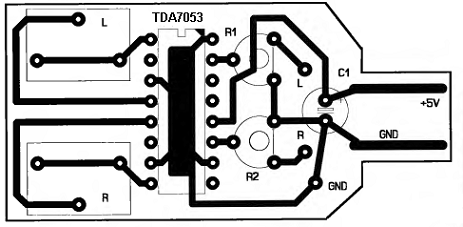 This audio amplifier uses TDA7053 which is an integrated class-B stereo power amplifier in a 16-lead dual-in-line (DIL) plastic package. Which requires minimal amount of external parts. This might be good solution to all of those who have PC with integrated sound card into motherboard. The main problem is that outputs of such sound cards are for active acoustic systems, this means that speakers must have power amplifier built in. If you decide to connect a headphones sometimes it might be not enough to provide required sound level.
Posted on Sunday, April 3, 2011 • Category: Headphone Amplifiers
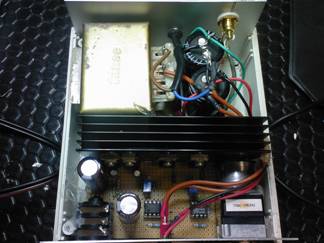 Presented here is a Class A headphone amplifier built around OPA134 opamp and IRF510 MOSFET power transistor as output stage and current driver. Quality, sound engineering applications, the most important criterion. Although many criteria used in the definition of quality for Class A amplifier. The most important feature, new crossover and work conditions and very low intermodulation distortion characteristics of a sound is very close to nature. Audio gurus know very well that the sound of a class A amplifier is the best one you can ever get.
Posted on Saturday, September 11, 2010 • Category: Headphone Amplifiers
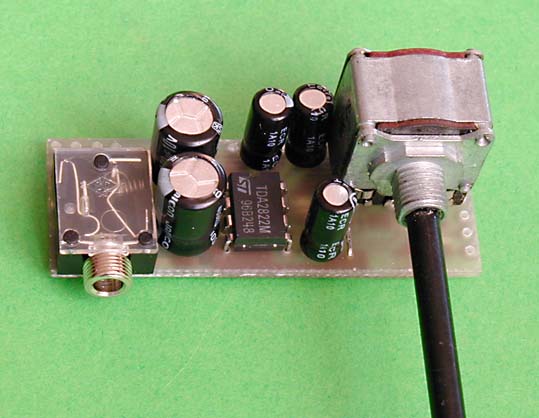 The small AF amplifier Suitable for laptops and MP3 players. IT may be powered from the PC (Game or USB) or AC adapter.The basis of the amplifier is an integrated circuit TDA2822M. With this circuit you can build an amplifier with output up to 2x 1 W. This high power circuit is only able to supply at peak times, when excited, would be permanently unable to work. Involvement of the amplifier is to figure 1. The input signal passes through frequency-dependent volume control on the divider. Frequency-dependent divider produces frequencies around 100 Hz, with a positive influence on the subjective sound quality when using small speakers. IO is the involvement of manufacturers' recommendations. The amplifier output can connect speakers with an impedance of 8 ohms (or greater), or headphones. IO supply voltage can be in the range of 1,8 to 15 V. The low supply voltage power amplifier is very small, at high supply voltage and load speakers with low impedance circuit may be a little overheated. With 8 ohm speakers are suitable voltage in the range of 6-9 V. I used to supply voltage 5 V, which are derived from the game port. Voltage of 5 V can be obtained even from the keyboard connector, PS / 2 port and USB. A better option is a network adapter, there are no problems with earth loops.
Posted on Wednesday, July 28, 2010 • Category: Headphone Amplifiers
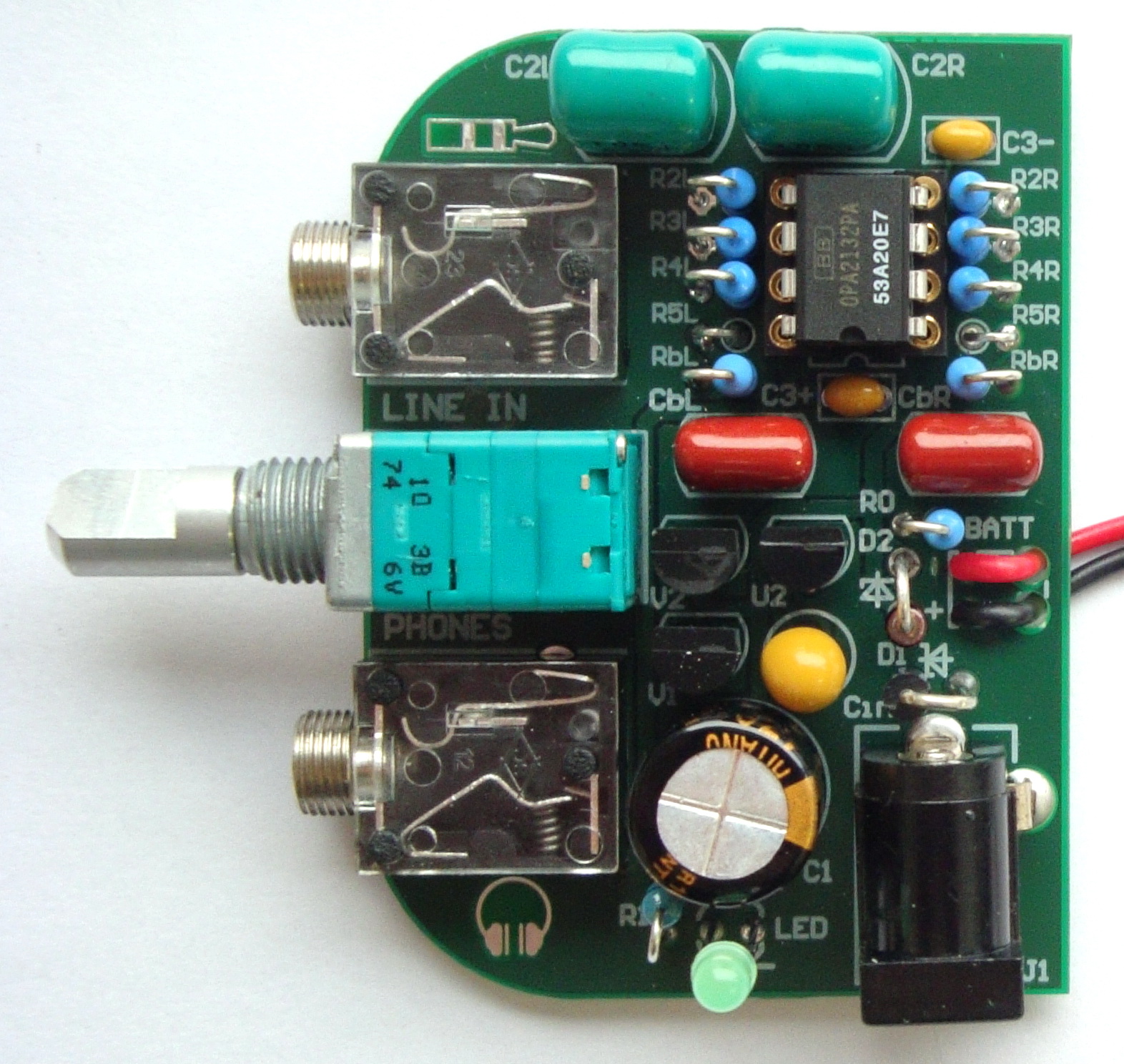 This is an article about my new PCB design for HiFI headphone amplifier using audiophile OPA2132 OP-AMP chip. Main feature is that the new PCB fits exactly to the classic Altoids tin-can. This new headphone amplifier incorporates moreover bass-boost circuit and constant current charger for 9V battery.
Posted on Thursday, April 24, 2008 • Category: Headphone Amplifiers
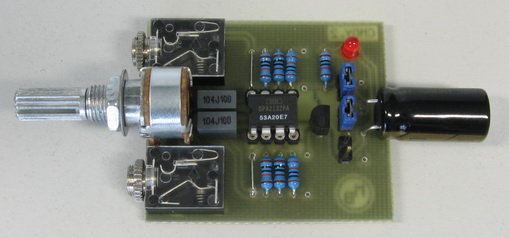 Here is very simple portable hi-fi headphone amplifier built around OPA2132 amplifier chip.
Instead of R5 and R25 is used only wires. These resistors are assembled only in case of oscillation. The value should be few ohms. Now I have to find some good box, and put my CMoy inside. It will be maybe most difficult part of building CMoy amplifier :-).
The sound is very good for so easy and small device. It can improve the sound of MP3 players, mobile phones and other portable devices. I would like to make some measurement of frequency characteristics, THD and also try to use different OpAmps, but unfortunately I don't have enough time to make it now.
Posted on Friday, April 11, 2008 • Category: Headphone Amplifiers
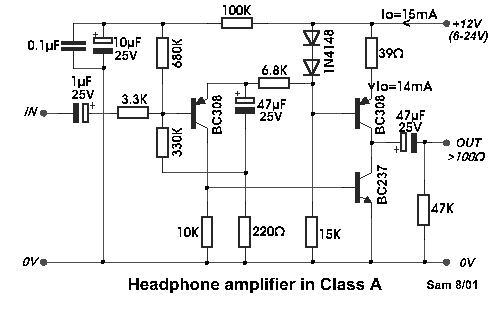 Even if simple the circuit, plirej' all condition, regarding the distortion and the response of frequency. The resistance of entry is 250K and the load that can drive is between 100R and 2K. The circuit use negative coupling. His exit functions in Class A, having as active charge the BC308 and resistance 39R. The bias current is roughly 14 mA and total 15mA. The gain of unit is 25. The power supply, can be from 6V up to 24V DC. The frequency response with load 200R, it is 37ΗΖ - 470KΗZ (-1dΒ), the output voltage is 1.5V (11mW), the distortion 0.5%.
Posted on Wednesday, April 2, 2008 • Category: Headphone Amplifiers
This is a Chu Moy headphone amp I made. I got the PCB design from Guzzler from Head-Fi and the original design is very popular and is here. I changed Guzzler's layout so I could use a Taiwan Alpha pot on the PCB. These pots a high quality (some say better than ALPS blue velvet) and are available from Jaycar. You can see the thread here. I also made a DIY Brown dog adapter so I could use two OPA627 single opamps in a dual opamp socket.
Circuit-Zone.com © 2007-2025. All Rights Reserved.
|